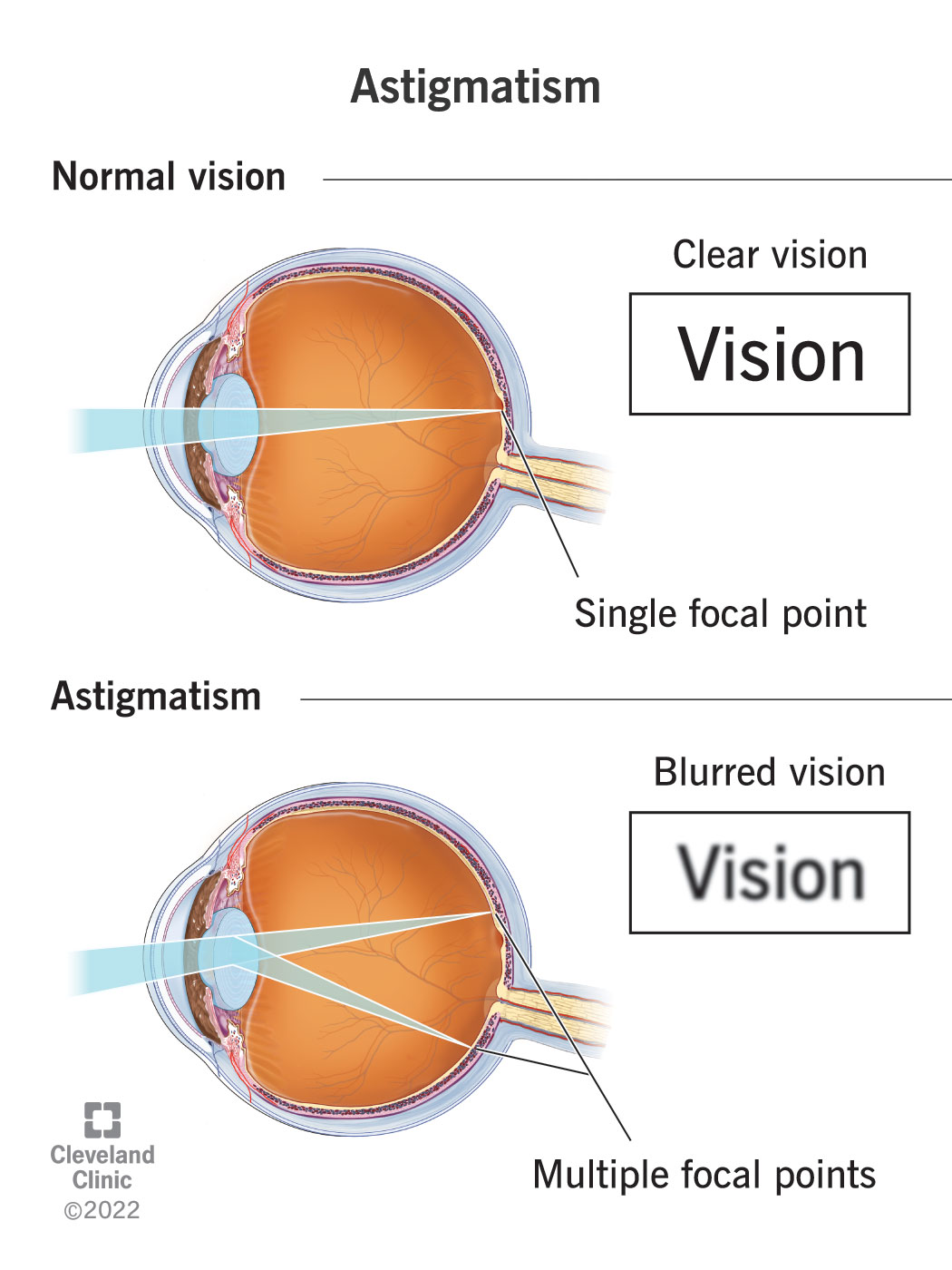Contents

Source: Cleveland Clinic
Understanding Astigmatism in Optics
Introduction to Astigmatism
Astigmatism is a common optical phenomenon that affects the focusing of light in imaging systems. It is often encountered when light interacts with lenses or mirrors, particularly when the light enters at an angle to the optical axis. This optical aberration can lead to image distortions and is a significant consideration in both optical design and ophthalmology.
Astigmatism as an Optical Aberration
In optical systems, astigmatism is classified as one of the classical aberrations. When a spherical lens or mirror receives light at a substantial angle, the focal length varies depending on the direction. Specifically, the focal length is shorter in the tangential plane and longer in the sagittal plane. This discrepancy results in imperfect focusing, where a circular beam cannot be focused to a single point. Instead, the beam focuses at different points along the tangential and sagittal directions, leading to elongated images.
Unlike spherical aberrations, astigmatism cannot be easily mitigated by simply reducing the aperture size. In fact, larger apertures can exacerbate the issue, leading to what is known as coma. To counteract astigmatism, optical systems often employ combinations of lenses specifically designed to correct these aberrations.
Astigmatism in Lenses and Mirrors
Astigmatism can also arise from imperfections in lenses and mirrors. Even with normal incidence, differences in curvature between vertical and horizontal planes can produce astigmatic effects. This is a common issue in human vision, where many individuals experience refractive errors due to uneven curvature of the eye’s lens. The degree of astigmatism is often quantified by the difference in dioptric power between the two planes.
In extreme cases, cylindrical lenses or mirrors, which are intentionally curved in only one direction, exhibit pronounced astigmatism. These optical elements have no focusing power in the perpendicular direction, which can be useful in specific applications but problematic in others.
Astigmatism in Light Beams
Astigmatism is also a property of light beams, such as laser beams that have passed through cylindrical lenses. In such cases, the focal points for vertical and horizontal directions do not align. This misalignment can be corrected using anamorphic prism pairs, cylindrical lenses, or tilted curved mirrors.
In laser technology, it is common to consider beam propagation separately for horizontal and vertical directions. This separation simplifies the analysis and correction of astigmatism, provided that cylindrical lenses are oriented to affect only one direction at a time.
Conclusion
Astigmatism is a multifaceted phenomenon that plays a crucial role in both optical engineering and vision correction. Understanding its causes and effects is essential for designing effective optical systems and addressing visual impairments. Whether dealing with lenses, mirrors, or light beams, addressing astigmatism requires careful consideration and precise corrective measures.
For further reading and exploration, consider examining resources on optical design, laser technology, and ophthalmology to gain a deeper understanding of astigmatism and its implications.

Source: Dr. Hayek George Ophthalmologist
Feel free to comment your thoughts.



